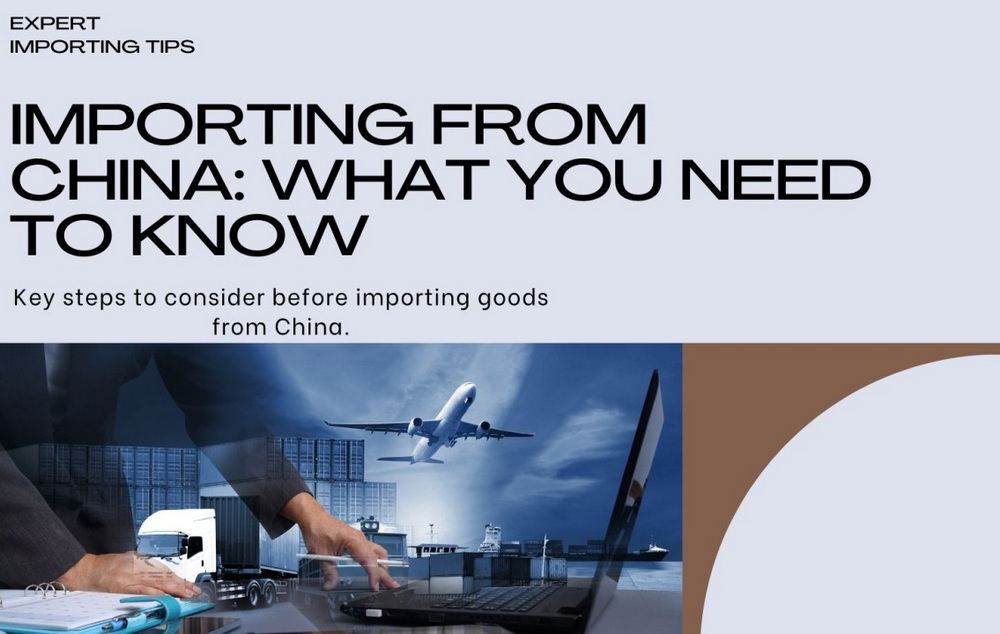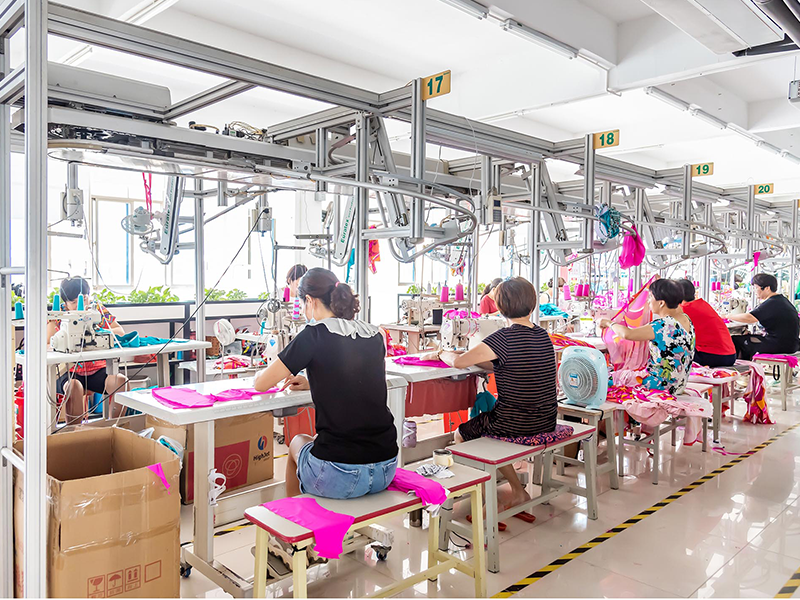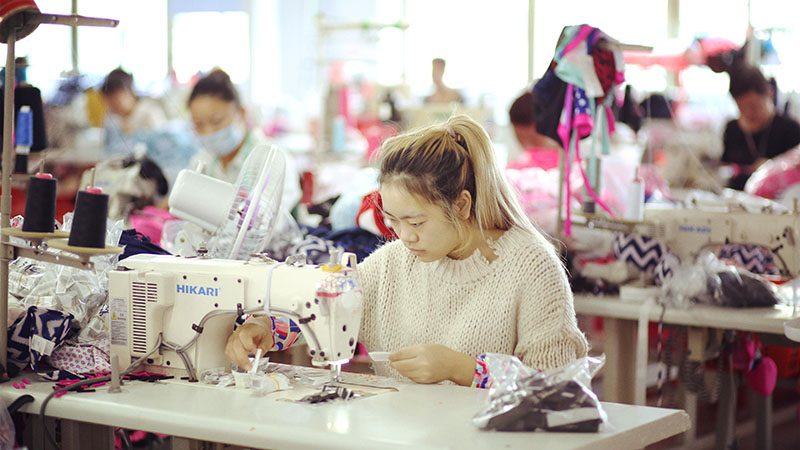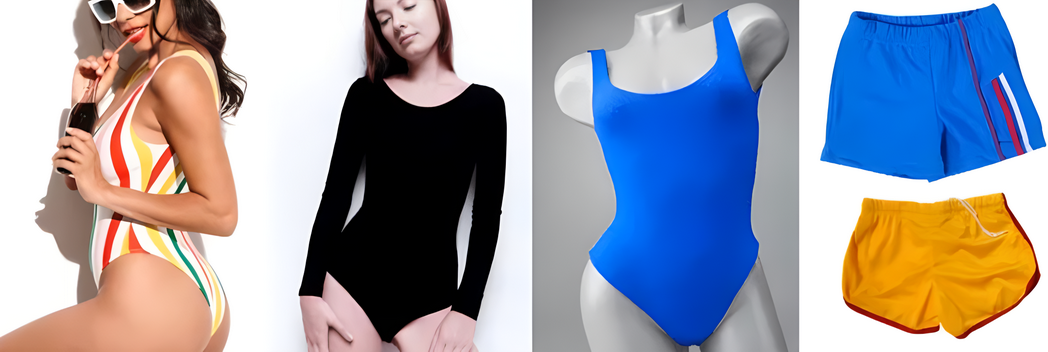Content Menu
● Understanding the Chinese Swimwear Industry
>> The Popularity of Chinese Swimwear
>> Key Considerations Before Importing
● Why Import Swimsuits from China
● Step-by-Step Process of Importing Swimsuits from China
>> Step 1: Conduct Market Research
>> Step 2: Find Reliable Swimwear Manufacturers
>> Step 3: Verify Quality Standards
>> Step 4: Ensure Compliance and Labeling
>> Step 5: Manage Your Import Documents
>> Step 6: Packaging, Branding, and OEM Customization
>> Step 7: Optimize Shipping and Logistics
● Key Challenges When Importing Swimsuits from China
● Legal and Safety Considerations
● Trends Influencing the Swimwear Import Market
● Building Long-Term Partnerships with Chinese Factories
● Tips for Successful Swimwear Importation
● Conclusion
● FAQs About Importing Swimsuits from China
>> 1. What are the main HS codes for swimwear imports?
>> 2. How can I check swimwear factory qualifications?
>> 3. Do I need a minimum order quantity (MOQ)?
>> 4. Are Chinese swimsuits safe for children's use?
>> 5. How can I protect my swimsuit designs?
● References
Importing swimsuits from China can be a strategic move for international retailers, wholesalers, and private label brands seeking cost-effective and high-quality products. With China producing over 70% of the world's swimwear output, its factories have fine-tuned every aspect—from fabric sourcing to OEM customization. However, buyers must understand the key steps, challenges, and regulations involved before they start.
This guide explores everything you should know before importing swimsuits from China, covering supplier selection, quality control, customs regulations, shipping, and long-term partnerships.

Understanding the Chinese Swimwear Industry
China remains the powerhouse of global swimwear production, with major manufacturing clusters in Guangdong, Fujian, and Zhejiang provinces. These regions are home to large-scale OEM and ODM factories specializing in various swimwear types: bikinis, one-pieces, men's trunks, rash guards, and children's swimwear.
Chinese factories stand out for their ability to produce trendy, durable, and affordable designs that meet international standards. Many offer full-package OEM services, including design assistance, labeling, packaging, and logistics support—ideal for brand owners starting their retail lines.
The Popularity of Chinese Swimwear
China has become a global hub for swimwear manufacturing due to its vast production capabilities and competitive pricing. Many international brands source their swimwear from Chinese manufacturers, benefiting from the country's advanced textile technology and skilled labor force.
Key Considerations Before Importing
Before diving into the import process, consider the following factors:
1. Regulatory Compliance: Ensure that the swimsuits meet the safety and quality standards of your target market. For instance, in the U.S., swimwear must comply with the Consumer Product Safety Improvement Act (CPSIA) and other relevant regulations.
2. Tariffs and Duties: Be aware of the tariffs applicable to swimwear imports. For example, the duty rate for swimsuits imported from China can vary, so it's crucial to check the latest tariff classifications and rates.
3. Quality Control: Establishing a robust quality control process is vital. This includes inspecting materials, craftsmanship, and compliance with your specifications.
Why Import Swimsuits from China
Importing from China can dramatically reduce unit costs while offering broad material and design options. Key benefits include:
- Access to specialized materials like nylon-spandex blends resistant to chlorine and saltwater
- Advanced digital sublimation printing for colorful, detailed patterns
- Flexible MOQs (minimum order quantities) for startups
- Comprehensive OEM/ODM customization packages
- Streamlined shipping via well-established export channels
However, cost savings must be balanced with due diligence, supplier screening, and compliance with destination-country regulations.

Step-by-Step Process of Importing Swimsuits from China
Step 1: Conduct Market Research
Before placing any order, research your target market. Identify your niche (luxury, eco-friendly, or affordable swimwear) and study competitors' pricing. Use tools like Google Trends or Statista to analyze seasonal performance and design preferences. For instance, sustainable or recycled-fabric swimwear has grown significantly in Western markets since 2022, creating profitable OEM opportunities.
Step 2: Find Reliable Swimwear Manufacturers
Reputation and reliability define your supply chain success. Search through verified B2B directories such as Alibaba, Made-in-China, and Global Sources. Always:
- Compare verified business licenses
- Request product catalogs and certificates (OEKO-TEX, ISO 9001)
- Ask for real sample testing before mass production
- Communicate through video calls to confirm factory existence and facilities
Top swimwear hubs like Jinjiang (Fujian Province) specialize in high-volume production with competitive lead times.
Step 3: Verify Quality Standards
Before importing swimsuits, insist on a thorough inspection. Some key checks include:
- Fabric consistency (nylon/spandex ratio) and elasticity
- Seam stitching smoothness, flatness, and symmetry
- Colorfastness to saltwater and chlorine
- Label accuracy and fiber content verification
- Absence of odor, stains, or loose threads
Professional third-party inspection firms in China (like AQI Service or SGS) offer specialized swimwear product inspections focusing on tensile testing, colorfastness, seam strength, and chemical safety.
Step 4: Ensure Compliance and Labeling
Each destination country enforces its own import safety standards.
For example:
- EU importers must follow REACH chemical restrictions and textile labeling in multiple EU languages.
- US importers must comply with the CPSC (Consumer Product Safety Commission) and CPSIA when importing children's swimwear.
- Australia and Canada require country-of-origin and fiber content labeling.
Chinese national swimwear standards such as *FZ/T 73013-2017* (Knitted Swimwear) and *GB 18401-2010* (National General Safety for Textile Products) should also be observed. Always retain your supplier's compliance certificates during customs clearance.
Step 5: Manage Your Import Documents
When importing swimsuits from China, ensure all shipping and customs paperwork is properly completed. Typically required documents include:
- Commercial invoice
- Packing list
- Certificate of origin
- Bill of lading or airway bill
- Import declaration or customs entry form
- Product test reports or certifications
Missing or incorrect documents can cause customs delays or penalties. Working with a certified customs broker simplifies this stage.
Step 6: Packaging, Branding, and OEM Customization
Chinese suppliers excel in OEM packaging and branding. You can request:
- Branded tags, woven labels, and size stickers
- Custom-printed polybags or eco-friendly paper boxes
- Collection-based packaging for retail sets
Smart packaging improves customer perception and retail readiness. Many factories even assist with photography and catalog design, enabling international buyers to launch immediately after arrival.
Step 7: Optimize Shipping and Logistics
Choose between air and sea freight based on urgency and quantity.
- Sea Freight: Cost-effective for bulk orders, typically Takes 20–35 days.
- Air Freight: Suitable for smaller, time-sensitive batches, arriving within 7–10 days.
Freight forwarding companies provide door-to-door delivery, including customs clearance. Always request an Import Security Filing (10+2) when shipping to the United States.

Key Challenges When Importing Swimsuits from China
1. Quality Inconsistency: Variations may arise between sample and bulk orders; mitigate using third-party inspections.
2. Cultural and Language Gaps: Miscommunication can affect design accuracy—translate technical specifications in detail.
3. Material Restrictions: Beware of local chemical or environmental limits in target markets.
4. Shipping Delays: Global logistics disruptions can extend lead times—plan buffer periods.
5. Intellectual Property Risks: Protect your brand and designs with NDAs and registered trademarks.
Legal and Safety Considerations
Each importer must ensure swimsuits meet textile safety and labeling standards. For example:
- Fiber content: Must clearly indicate nylon, spandex, or polyester percentages.
- Formaldehyde and pH levels: Must meet textile safety limits.
- Children's Swimwear: Should comply with GB 31701-2015 and avoid hazardous accessories.
Failure to comply can result in re-export or destruction at customs entry.
Trends Influencing the Swimwear Import Market
The Chinese swimwear industry is evolving rapidly. Current trends include:
- Sustainable Materials: Recycled polyester and eco-nylon.
- High-Performance Fabrics: UV-resistant and chlorine-resistant fibers.
- Digital Customization: 3D scanning for accurate body fit.
- Active Lifestyle Expansion: Rise in athleisure and multifunction swimwear.
Retailers importing from China can capitalize on these innovations to differentiate their brands internationally.
Building Long-Term Partnerships with Chinese Factories
Successful importers view factories as strategic partners. Key relationship tips:
- Maintain transparent communication about MOQ, production schedules, and quality expectations.
- Visit your factory (or hire a sourcing agent) to establish trust.
- Use written contracts specifying price terms, material types, packaging details, and resolution steps for defective items.
- Incentivize timely delivery and consistent quality through repeat orders.
Tips for Successful Swimwear Importation
- Choose suppliers with proven export records to North America or Europe.
- Always request sample approval before mass production.
- Monitor every production phase using pre-shipment inspections.
- Align swimwear sizing charts with your country's standards.
- Keep compliance reports and customs codes readily available (HS Codes: 6112.4100 for women's, 6112.3100 for men's synthetic swimwear).

Conclusion
Importing swimsuits from China opens immense opportunities for international clothing brands and distributors. From cost efficiency to customization capabilities, Chinese manufacturers deliver competitive advantages unmatched worldwide. However, proper due diligence—verifying supplier qualifications, quality control, documentation, and compliance—is crucial.
For brands seeking a consistent OEM swimwear partner, choose a verified Chinese factory that offers flexible production, responsible sourcing, and transparent communication.
FAQs About Importing Swimsuits from China
1. What are the main HS codes for swimwear imports?
Men's synthetic swimwear uses HS Code 6112.3100, and women's synthetic swimwear uses HS Code 6112.4100.
2. How can I check swimwear factory qualifications?
Request business licenses, export certificates, and third-party verification from inspection agencies like SGS or Intertek.
3. Do I need a minimum order quantity (MOQ)?
Yes, most Chinese OEM swimwear factories require MOQs from 300 to 1000 pieces per design, depending on customization levels.
4. Are Chinese swimsuits safe for children's use?
Yes, provided they comply with GB 31701-2015 and CPSIA standards for children's textile safety, including chemical content limits.
5. How can I protect my swimsuit designs?
Sign an NDA, register your trademark in China, and collaborate with trusted suppliers who respect intellectual property rights.
References
[1](https://fr.swimsuitcustom.com/blogArticle/97)
[2](https://www.chinaimportal.com/blog/swimwear-manufacturers-china/)
[3](https://chinapurchasingagent.com/importing-apparel-from-china/)
[4](https://cceeccic.org/1387144307.html)
[5](https://www.examinechina.com/sourcing-beach-accessories-from-china-to-the-us/)
[6](https://aqiservice.com/swimwear-bikini-product-inspection-services/)
[7](https://deepwear.info/blog/swimwear-manufacturing/)
[8](https://www.wedoimport.com/how-to-import-clothing-and-textile-from-china/)
[9](https://jingsourcing.com/p/b52-china-swimwear-manufacturer/)



































































